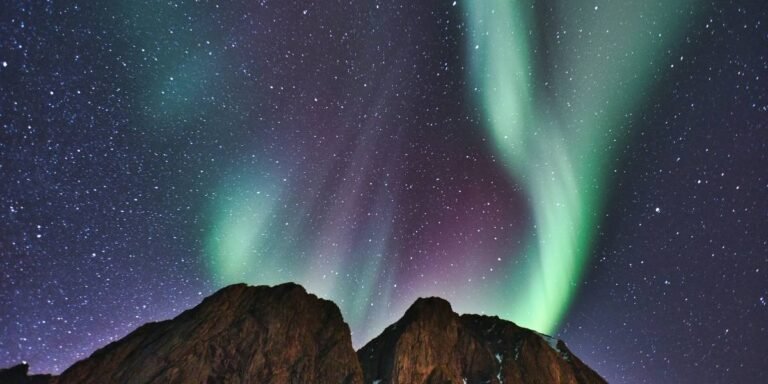Oregon outdoor sports have long been a quiet draw for athletes who prefer dirt under their shoes and wind in their face over stadium lights and scoreboards. From Portland’s urban trails to the rugged terrain of Mount Hood and the Columbia River Gorge, the state offers a year-round playground for runners, climbers, cyclists, and paddlers. It’s not just about recreation, it’s a way of life that shapes how people live, train, and connect with their communities.
For those who feel boxed in by crowded gyms or repetitive routines, Oregon’s outdoor sports scene offers something different. There’s a sense of freedom in choosing a trail over a treadmill, or a climb over a commute. And while the weather doesn’t always cooperate, many locals say the unpredictability is part of the appeal. It’s understandable if some feel discouraged by rain-soaked gear or icy trailheads, but the reward often outweighs the discomfort.
Portland Trail Running Builds Community and Endurance
Portland trail running is more than a workout, it’s a social ritual. Forest Park, with over 80 miles of trails, is one of the largest urban forests in the country and a favorite among runners who want elevation without leaving the city. Nearby, Powell Butte and Tryon Creek offer quieter routes with varied terrain, attracting both beginners and seasoned athletes.
What makes Portland trail running unique is how accessible it is. Runners can finish a workday and be on a trail within minutes. The city’s layout, with green spaces woven into residential areas, encourages spontaneous runs and group meetups. Weekend races and informal trail challenges keep the community engaged, while local gear shops and running clubs provide support without pressure.
The terrain itself is a mix of soft soil, rocky climbs, and moss-covered switchbacks. It’s not always smooth, but that’s part of the training. Runners learn to adapt, pace themselves, and respect the trail. Injuries happen, but so do breakthroughs. Many say their best runs come on days they almost stayed home.
Oregon Climbing Culture Thrives on Grit and Geography
Oregon climbing culture is shaped by the state’s diverse geography. From the basalt columns of Smith Rock to the alpine routes near Mount Hood, climbers have access to a wide range of challenges. Portland climbers often train indoors during colder months, then head out to natural crags as conditions improve.
Climbing in Oregon isn’t just about strength, it’s about problem-solving. Routes vary in difficulty, and climbers often spend hours studying holds and planning movements. The mental focus required is part of the appeal, especially for those who find clarity in physical challenge. There’s also a strong ethic around safety and stewardship. Climbers pack out their gear, respect closures, and often volunteer for trail maintenance.
The community is tight-knit but welcoming. New climbers are encouraged to learn through mentorship and practice, not competition. Outdoor climbing events and meetups help build connections, and many climbers say the friendships formed on the wall are just as important as the climbs themselves.
Cycling and Mountain Biking Keep Oregon Athletes Moving
Cycling is a staple of Oregon outdoor sports, with Portland often ranked among the most bike-friendly cities in the country. Commuters, racers, and weekend riders share the road, and the infrastructure supports a wide range of cycling styles. Bike lanes, repair stations, and scenic routes make it easy to ride year-round.

Photo Credit: Unsplash.com
Mountain biking adds another layer. Forest Park, Sandy Ridge, and the trails near Hood River offer technical descents, fast singletrack, and forested climbs. Riders often say the terrain teaches patience and control. It’s not just about speed, it’s about reading the trail and responding in real time.
Cycling also connects athletes to the environment. Riders notice seasonal changes, wildlife, and trail conditions in ways that cars can’t replicate. There’s a rhythm to it, and many say it helps them stay grounded. Whether riding solo or in a group, the experience is physical, mental, and emotional.
Water Sports Bring Oregon’s Rivers and Lakes to Life
Oregon’s rivers and lakes are central to its outdoor sports scene. Kayaking, paddleboarding, and rafting are popular in summer, with the Willamette and Columbia Rivers offering accessible routes for all skill levels. In Portland, paddlers often launch from city parks and explore urban waterways that feel surprisingly remote.
Water sports require a different kind of awareness. Conditions change quickly, and athletes must read currents, weather, and boat traffic. It’s not always predictable, but that’s part of the challenge. Many say the quiet moments on the water, when everything slows down, are what keep them coming back.
Lake paddling is also popular, especially in the Cascades. Clear water, mountain views, and peaceful surroundings make it ideal for recovery days or family outings. Some athletes use paddleboarding as cross-training, while others treat it as meditation. Either way, it’s a reminder that sport doesn’t always mean speed or competition.
Oregon Outdoor Sports Shape Lifestyle and Identity
Oregon outdoor sports aren’t just activities, they’re part of how people live. Athletes plan their schedules around trail conditions, weather forecasts, and seasonal events. Gear is often chosen for durability and comfort, not style. Conversations revolve around routes, races, and recovery, and friendships are built through shared effort.
There’s also a sense of pride in being part of a state that values outdoor access. Public lands, trail systems, and community events reflect a commitment to movement and connection. While challenges like overcrowding and trail erosion exist, many locals work together to protect the spaces they use.
For those new to Oregon or returning after time away, the outdoor sports scene can feel overwhelming. There’s so much to try, and it’s easy to feel behind. But most athletes say the only real requirement is curiosity. Whether running, climbing, biking, or paddling, the goal is to keep moving and stay open.
Oregon outdoor sports continue to thrive because they offer something real. The terrain is varied, the effort is honest, and the rewards are personal. It’s not about winning, it’s about showing up, staying present, and finding meaning in motion.









